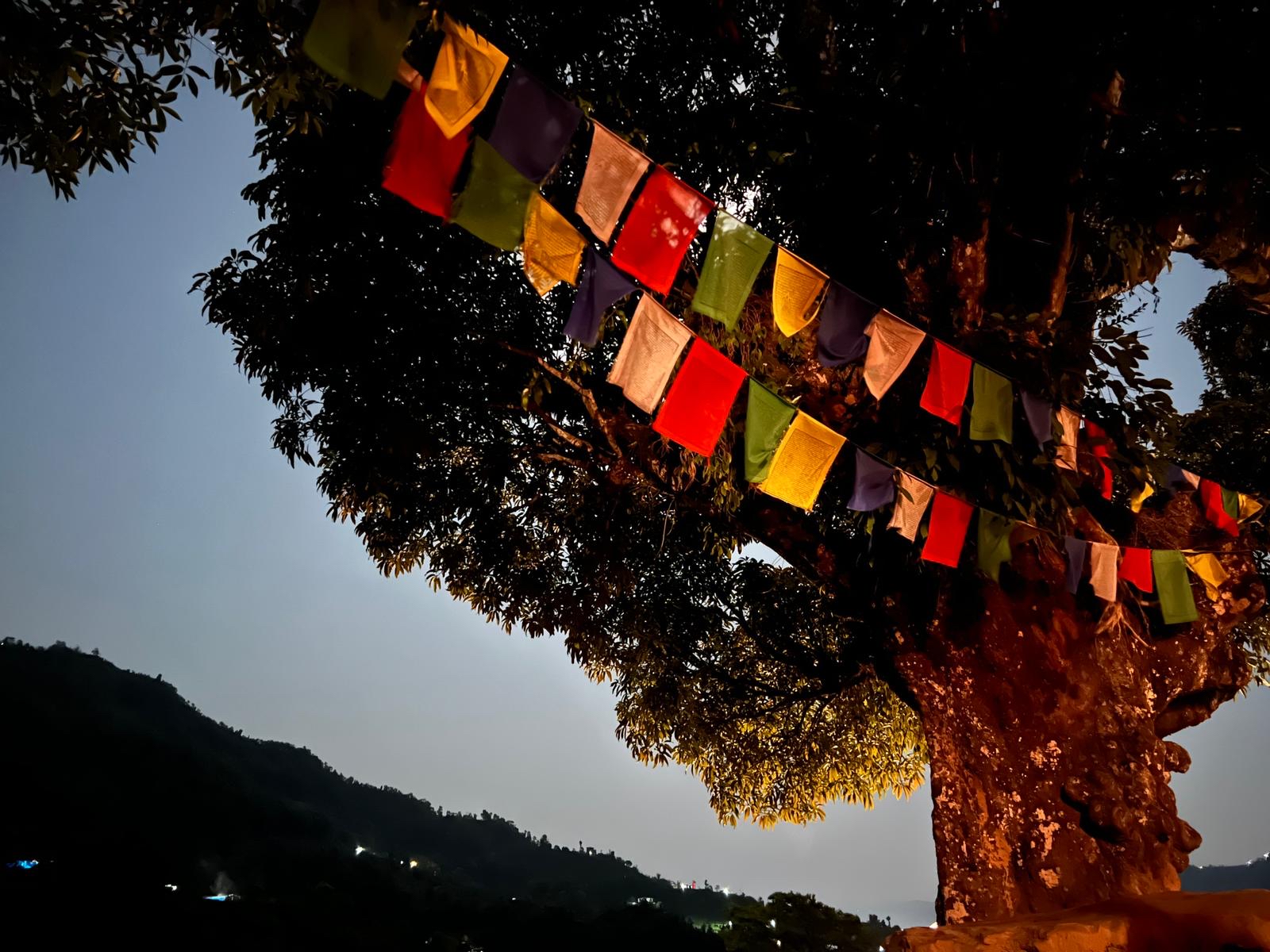
The guru tells us to strike the meditative posture, palms facing upwards, and close our eyes. “Be comfortable, relax your body,” he says. Easier said than done, I think – it’s taking much of my concentration just to keep my legs crossed. We begin our breathing exercises: the guru, called Mantra, starts to chant “om” and we follow suit. I can’t help looking out the corner of my eye at the other students, as we chant over and over. I’m not a natural meditator, and I feel ridiculous.
Nowadays, tourists come to Nepal as much for a quick fix of spiritual enlightenment as for the mountains. Meditation retreats and yoga centres catering to foreigners have proliferated in the majority-Hindu country where Buddha was born. But are they any good? I’ve never done yoga before and am about as spiritual as a plank of wood. That makes me the perfect candidate, I decide, for a crash course in the merits of Nepal’s yoga and meditation offerings.
These simple retreats are big business in Nepal these days – you can even strip things back to basics (spiritually, at least) at luxury hotels. Tiger Mountain Lodge, for example, offers yoga and meditation lessons alongside its five-star digs. Situated on an idyllic hilltop above the lakeside town of Pokhara, no wonder well-heeled hippies are flocking to it. I visit for a couple of days, learning meditation from a man called Happy Ji, and leaving feels harder than any yoga pose.
What I’m en route to, however, is a more authentic experience than could be found in a five-star hotel. Atmashree Yoga Retreat is a four-floor concrete building overlooking Pokhara’s lake. At the door, I’m welcomed by Mantra, my young instructor who shows me to my lodgings – a bed with a firm mattress, and not much else. I miss Tiger Mountain, but there’s no time to mope. My first yoga session is about to start.
I imagine us jumping straight into a run-through of asanas, but in fact we spend the first few minutes sitting still – or trying to, in my case. Mantra instructs us to imagine a flame or a candle in the centre of our foreheads, to focus on that and let other thoughts go like passing clouds. We concentrate on our breathing and begin chanting “om”. Initially, I find it embarrassing. But by the third “om” I’m appreciating the way the chant vibrates through my body.
After about 10 minutes, Mantra decides it’s time for something called yoga nidra. Again, I brace myself for ligament-threatening postures, but this time we’re told simply to lie on our backs, close our eyes and repeat to ourselves: “I will not fall asleep, I will not fall asleep”. This is where things get weird. “Be aware of your right side,” Mantra says. “Be aware of the fingers of your right hand. Be aware of your thumb; of your index figure…” And so on, down through my entire body, one side, then the other, for a total of 45 minutes. The idea is to direct your awareness to each part of your body in turn (like the ‘body scan’ practised in mindfulness). It’s not easy, as proved by a few snores coming from another student, but there is a discernible result. Afterwards, I feel like my perception of my body has shifted slightly.
In the early evening, as the setting sun turns the lake a silvery purple beneath us, we head up to the roof for our next class. Raj is 37 and has 25 years’ experience of yoga, he tells us. He leads us through moon salutations – a sequence of 14 stretches. Then we try some “simple” postures, which I find tough. The final session of the day involves chanting Sanskrit mantras, with Mantra playing a harmonium and Raj thrumming tabla drums.
While the asanas are what most westerners have in mind when they think of yoga, practising them only comprises two of Atmashree’s five daily sessions. Paul, a fellow student from Cumbria, tells me he was at first a bit disappointed by this, as he had come expecting to practise – or, rather, exercise – all day, and finds the meditative and spiritual components difficult. But that, according to Mantra, is the point. “Yoga is not just positions, or a kind of exercise,” he will tell us later. “It is a way of life.”
Rather than a hotel offering yoga sessions like Tiger Mountain Lodge, Atmashree feels more like a homestay. Dinner – cooked by Raj’s wife, who lives here along with their two young sons – is a family affair, all of us crammed around the kitchen table. In the morning, a bonus session involves pouring salty water into our nostrils from a special jug. This too, they say, is yoga.
The programme is tiring, and I’m in bed by 9pm every night. But after a few days at Atmashree, I’m looking forward to the meditation sessions, and am even getting better at my asanas. “You’ve improved,” Mantra tells me on day three, after I manage to balance with a foot tucked into my groin, sole facing upwards, without falling on my face.
Unlike most of the guests at Atmashree – or the devotees who spend weeks at a time at monasteries such as Kopan in Kathmandu, which has been hosting westerners since 1971 – I’m only here for four days. But my taster makes me realise that even a small dose of peace and tranquillity can be positive – and even life-changing. If a spiritual sceptic like me can find himself in a week in Nepal, anyone can.
Yoga near me, Yoga retreat Nepal, Nepal Yoga Retreat, Yoga Meditation Retreat in Pokhara, Yoga teacher training course in Nepal, Yoga in Nepal, Yoga in Pokhara, Meditation in Nepal, Yoga trekking in Nepal, Yoga holiday in Nepal, Sound healing in Nepal, yoga teacher training in Pokhara, hiking retreat in Pokhara, festival retreat in Nepal, yoga teacher training in Kathmandu
